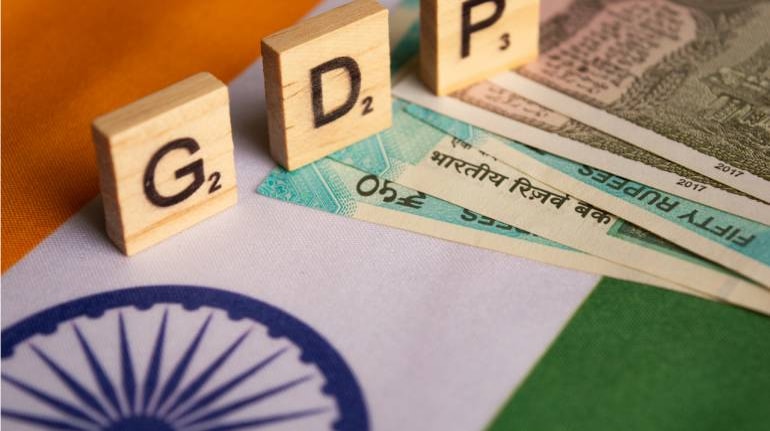



India’s macros in general, and its GDP growth in particular, have been the toast of the global macro scenario. The NSO had pegged the Indian GDP expansion in H1 FY2024 at a robust and envy-inducing 7.7 percent. This had benefited from the recovery after Covid and also boosted by a favourable base. After an uneven monsoon and amidst signs of deceleration, optical or otherwise, in a number of non-agri indicators, we had anticipated a slowdown in the GDP and GVA growth to 6.0 percent in Q3 FY2024.
On Feb 29, 2024, the NSO released the first estimate of growth for Q3 FY2024, revised data for the previous two quarters and also updated its forecast for the full year FY2024.
A Curious DivergenceHere comes the dilemma. As anticipated, India's GVA growth slowed in Q3 FY2024 to 6.5 percent from a revised 8.2 percent in Q1 FY2024 and 7.7 percent in Q2 FY2024, although the extent of the moderation was not as sharp as what we had feared. Agricultural output contracted after an uneven monsoon, and industrial growth slowed, whereas the expansion in services improved, in line with our expectations.
However, GDP growth rose to a robust 8.4 percent in Q3 FY2024 from an upward revised 8.2 percent in Q1 FY2024 and 8.1 percent in Q2 FY2024! Private final consumption expenditure growth rose but remained lacklustre at 3.5 percent in Q3 FY2024. This corroborates the anecdotal evidence that rural demand is cautious after an unfavourable monsoon, while urban demand is healthy but uneven.
Investments emerged as the fastest growing component of GDP in Q3 FY2024. Moreover, this component displayed a very mild sequential dip in growth to 10.6 percent from 11.6 percent in Q2 FY2024, in sharp contrast to the considerable slowdown seen in government capex, as well as all indications that private capex was not particularly robust.
The driver for this divergence in the sequential trend in growth in Q3 vs Q2, as well as the sharp wedge between the GDP and GVA growth numbers in Q3, was net indirect taxes. This metric, effectively defined as indirect taxes less subsidies, displayed a six-quarter high expansion of 32 percent in this quarter, which is decidedly unsustainable.
So did India’s economic growth improve or slow down in Q3 FY2024? In our view, it may be more appropriate to look at the trend in the GVA growth to understand the underlying momentum of economic activity, especially when net indirect taxes have shown such a sharp and clearly unsustainable jump.
With the upside surprise in Q3 as well as upward revisions for H1, the advance estimates for FY2024 GDP growth have been revised up to 7.6 percent from 7.3 percent. This accompanies a downward revision in the FY2023 GDP growth to 7.0 percent from 7.2 percent.
What does all of this imply for Q4 FY2024, two months of which are already over? Notwithstanding the sharp upside surprise in the headline GDP growth number for Q3 FY2024, the NSO’s implicit growth projections for Q4 FY2024 entail a sub-6 percent growth for both GDP (5.9 percent) and GVA (5.4 percent). The latter is similar to our own earlier forecast of 5.3 percent for GVA growth for Q4 FY2024.
This implies that the NSO itself expects GVA growth to slide by ~107 bps between Q3 and Q4. More importantly, it anticipates that the GDP expansion will moderate by as much as 246 bps in Q4 relative to Q3! All the more reason for us to look at the moderation in GVA growth and not the upside in GDP growth as the main takeaway from the Q3 numbers.
Is there evidence supporting a slowdown in growth in Q4 relative to Q3? The contraction in the Government of India’s (GoI's) revenue and capital expenditure, as well as the slide in the core sector growth in January 2024, certainly pose some sobering trends.
Moreover, while rabi sowing ended the season higher than the year-ago levels, the catch up happened only in the last few weeks. We anticipate that rabi output will be subdued for several crops, as hinted by the NSO’s implicit forecast of a 0.6 percent contraction in agriculture and allied activities in Q4 FY2024. As a result, rural demand is likely to remain cautious.
Sticking with the GVA, the NSO has projected the second advance estimate of FY2024 growth at 6.9 percent, which is modestly higher than what our forecast was prior to seeing the Q3 FY2024 data (6.6 percent). This estimate of 6.9 percent GVA expansion in FY2024 seems to be appropriate at this juncture.
Aditi Nayar is Chief Economist, Head- Research & Outreach, ICRA. Views are personal, and do not represent the stand of this publication.Discover the latest Business News, Sensex, and Nifty updates. Obtain Personal Finance insights, tax queries, and expert opinions on Moneycontrol or download the Moneycontrol App to stay updated!
Find the best of Al News in one place, specially curated for you every weekend.
Stay on top of the latest tech trends and biggest startup news.